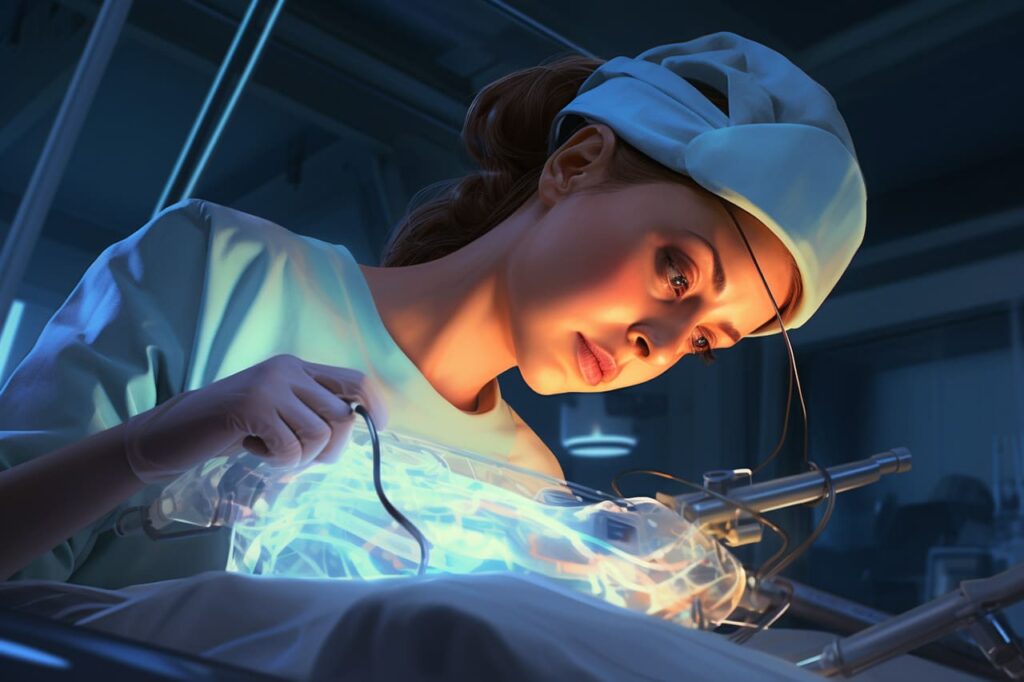Surgical imaging has come a long way from the days of X-rays, with newer advancements bringing about more effective and precise ways of diagnosing and treating patients. These advances have enabled doctors to undertake more accurate and safe surgical procedures, from 2D imaging to 3D imaging and even Artificial Intelligence (AI) powered imaging. Let’s look at the different types of imaging, their benefits, and the future of surgical imaging.
X-Rays: The Old Standard
X-ray imaging is the oldest and most widely used type of imaging, with its use dating back to 1895. This technology uses X-rays to create images of the inside of a body. X-rays have been used in the past to diagnose various conditions such as fractures and tumors. However, the resolution of the images produced by X-rays is low, and the images can be difficult to interpret. As such, the use of X-rays for surgical imaging is largely limited due to its lack of accuracy.
2D Imaging: Enhanced Visualization
2D imaging is an improved method of imaging than X-ray, providing higher-resolution images for more accurate diagnosis. This technology uses an array of flat sensors to generate images in two dimensions. 2D imaging is also faster than X-ray imaging, and it can be used for a wider range of applications, such as the diagnosis of organ damage, cancers and various other illnesses.
New Developments: 3D Imaging
3D imaging is the latest development in the field of surgical imaging. This technology utilizes two or more sensors that are arranged in a circular fashion to generate three-dimensional images of the body. This technology has enabled surgeons to have a better view of the anatomy of the patient and plan the surgery accordingly. Additionally, it can provide a more accurate diagnosis by providing a detailed view of the affected organs or tissues.
Benefits of 3D Imaging
3D imaging has numerous benefits, the most important of which is the improved accuracy and precision of diagnosis and surgery. This technology provides a much more detailed view of the anatomy, allowing for more accurate planning of surgeries. Additionally, 3D imaging can be used to detect smaller abnormalities that may have been missed in 2D imaging. This technology also provides surgeons with a greater level of control over the movements of the surgical instruments, thereby reducing the risk of making mistakes.
Cutting-Edge Technology: AI in Imaging
AI-powered imaging is a cutting-edge technology that is now being used in the field of surgical imaging. This technology involves the use of AI algorithms to analyze and interpret medical images and provide a more detailed analysis. AI algorithms can detect abnormalities and anomalies that may have been missed in traditional imaging. This technology has the potential to revolutionize the field of surgical imaging by providing a more accurate and detailed diagnosis.
The Future of Surgical Imaging
The future of surgical imaging is promising, with AI-powered imaging and other advancements making it possible for surgeons to perform more precise and safe surgeries. Additionally, 3D imaging has enabled surgeons to plan the surgery and gain a better understanding of the anatomy of the patient. As the technology continues to develop, it is likely that these advances will be used to further improve the accuracy and safety of surgical procedures.
Surgical imaging has come a long way since the days of X-rays, and in the future, this technology will likely have even more groundbreaking applications. As surgical technology continues to develop, we will see even more advances in the field of surgical imaging that will benefit patients and medical professionals alike.
